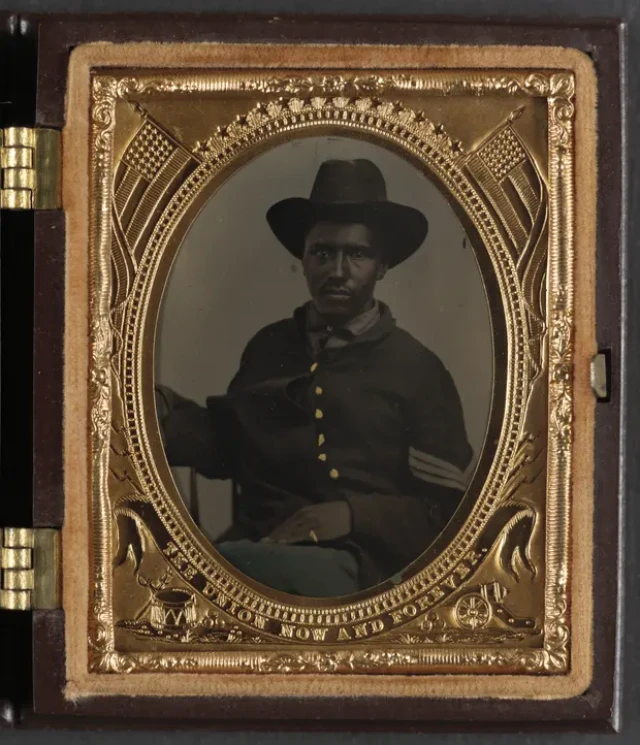A classic tintype photo from the 19th century showing a civil war soldier, whose garments are hand-colored in gold paint. The soldier, crowned by a gold frame, looks forward, holding a gun over his chest.
But rather than just any war portrait, it’s part of the overlooked history of African American soldiers who fought during the period. This one and more are featured in a new book called The Black Civil War Soldier: A Visual History of Conflict and Citizenship.
The book features more than 70 images of black soldiers who fought in the civil war, alongside handwritten letters, recruitment posters, old newspaper clippings and personal journal entries. One recruitment poster from 1863 reads: “Men of color to arms!”
“The archive speaks,” writes the book’s author, Deborah Willis, a photo historian and New York University professor. “If we search, if we listen, it can reveal worlds of brutality and kindness, of shame and glory. In this book, I want you to see and hear the world of the black soldiers and the wives and mothers of the civil war.”
The book aims to bring these stoic portraits of black soldiers to life – with personal stories, to family members back home, and interviews with historians and personal observations from a skilled photography expert. It’s what Willis calls the African American experience, as well as resilience.

Unidentified African American soldier in a Union corporal’s uniform. Photograph: Library of Congress, Prints and Photographs Division
This book tells tales of courage, discrimination, pay inequalities and heroism. “By examining diary pages, letters and news items, I want to build on the stories that each of their portraits tell,” she said to the Guardian. “To focus a lens on their hopefulness and the sense of what could be won from loss.”
The Civil War, waged from 1861 to 1865, began in a divided America after a dispute over slavery. While Abraham Lincoln was president, it was fought between the northern states (Union soldiers) and the southern states (Confederate), who were pro-slavery. After the Union defeated the Confederate states, slavery was abolished across the country during the Reconstruction era that followed – but of course, the actual narrative is not that simple.
“I used to hear often about the civil war that the north won the war, but the south won the narrative,” said Willis, referring to how African Americans were depicted in pop culture and films like Birth of a Nation and Gone with the Wind. “Both were acts of preserving the triumph narrative and restaging events from the civil war and American slavery.”
